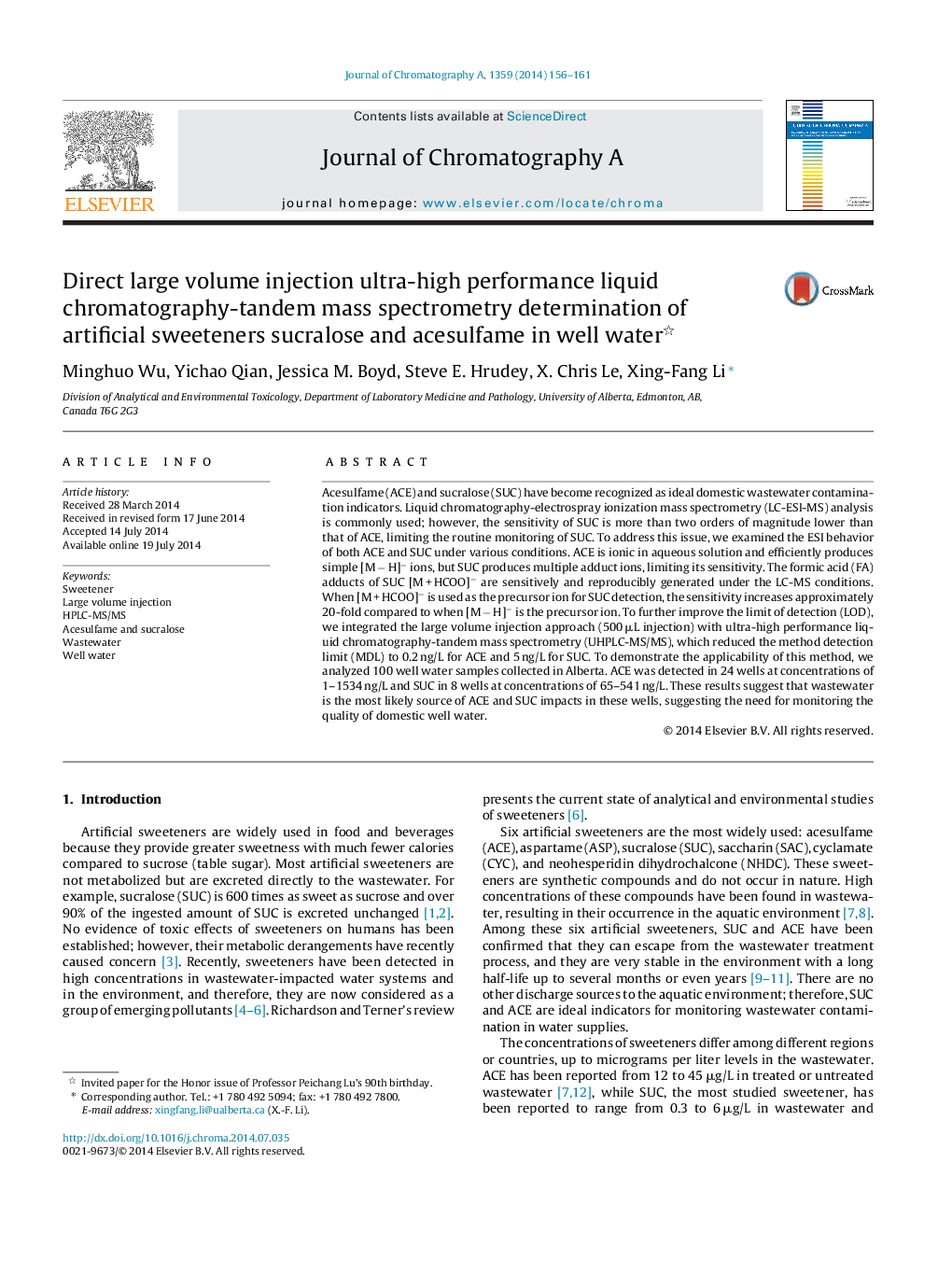| کد مقاله | کد نشریه | سال انتشار | مقاله انگلیسی | نسخه تمام متن |
|---|---|---|---|---|
| 1199395 | 1493567 | 2014 | 6 صفحه PDF | دانلود رایگان |

• New large volume direct injection HPLC-MS/MS method.
• Highly sensitive and rapid determination of sweeteners in water.
• Method LOD of low ng/L without preconcentration steps.
• Demonstration of a robust tool for monitoring of wastewater contamination.
• Occurrence of sweeteners in 24% of wells highlighting the need for monitoring.
Acesulfame (ACE) and sucralose (SUC) have become recognized as ideal domestic wastewater contamination indicators. Liquid chromatography-electrospray ionization mass spectrometry (LC-ESI-MS) analysis is commonly used; however, the sensitivity of SUC is more than two orders of magnitude lower than that of ACE, limiting the routine monitoring of SUC. To address this issue, we examined the ESI behavior of both ACE and SUC under various conditions. ACE is ionic in aqueous solution and efficiently produces simple [M − H]− ions, but SUC produces multiple adduct ions, limiting its sensitivity. The formic acid (FA) adducts of SUC [M + HCOO]− are sensitively and reproducibly generated under the LC-MS conditions. When [M + HCOO]− is used as the precursor ion for SUC detection, the sensitivity increases approximately 20-fold compared to when [M − H]− is the precursor ion. To further improve the limit of detection (LOD), we integrated the large volume injection approach (500 μL injection) with ultra-high performance liquid chromatography-tandem mass spectrometry (UHPLC-MS/MS), which reduced the method detection limit (MDL) to 0.2 ng/L for ACE and 5 ng/L for SUC. To demonstrate the applicability of this method, we analyzed 100 well water samples collected in Alberta. ACE was detected in 24 wells at concentrations of 1–1534 ng/L and SUC in 8 wells at concentrations of 65–541 ng/L. These results suggest that wastewater is the most likely source of ACE and SUC impacts in these wells, suggesting the need for monitoring the quality of domestic well water.
Journal: Journal of Chromatography A - Volume 1359, 12 September 2014, Pages 156–161